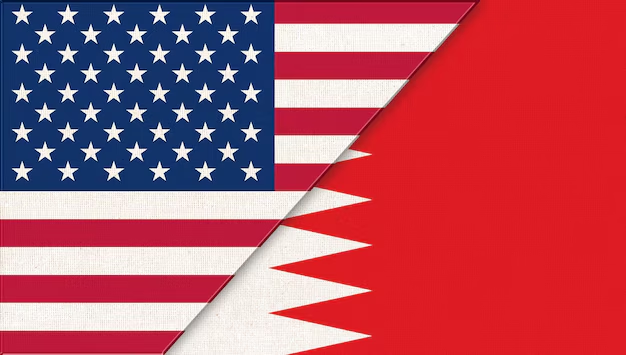Journalists’ road trip through occupied West Bank on Israel route 60 ends in despair over the idea of a Palestinian state
By: John Mason / Arab America Contributing Writer
Washington Post journalists took a long, detailed journey down Israel route 60, which intersects occupied West Bank top to bottom. Their general findings are:
• Statehood for Palestine is significantly compromised by Jewish settlements, home to ½ million, which are penetrating deep into occupied territory
• The international ’Green Line’ that separates Israel and the Palestinian territory following the 1967 war is barely recognized by Israelis anymore
• the local, West Bank economy is becoming more dependent on the settler and the larger Israeli economy, diminishing the likelihood of a sustainable Palestinian economy in the future
• East Jerusalem, the symbolic capital of Palestine, was captured in 1967— some Israelis believe that it is theirs, as part of greater Jerusalem.
• The Post criticizes the Palestinian Authority, though the larger issue of Israeli political and military domination outweighs it
• An opposing view to the Post’s by the Jewish News Service is presented to provide balance
Why the Washington Post took the journey on route 60
Israel Highway number 60 follows the ancient Road of the Patriarchs from the northern hills of Galilee through Nablus and Hebron to the southern Negev Desert, much as it did in biblical times. Three Washington Post reporters took this road trip down Route 60 to observe and interview residents along the highway, finally revealing “how remote the prospect of a Palestinian state – and a resolution of the Middle East conflict – has become.”
The Post gave away its conclusion at the front end of its story because, it seems, it has been obvious even from the start as the Post report stated upfront, “The troubled state of statehood is immediately visible out the windows of vehicles traveling Route 60. There are the Israeli settlements that have not only grown larger in recent years, now home to a half-million Jews in the West Bank but also are reaching deeper into occupied territory, hollowing out any future Palestine.”
Their entire journey was characterized by the two-lane highway weaving in and out of a hilly “topography of conflict.” Route 60 starts and ends in Israel, though the longest part runs down the center of the occupied West Bank. That route would hypothetically comprise a presumed Palestinian independent state’s national route.
For now, however, there is another line, perhaps more important, the ’Green Line’—the internationally recognized boundary that separates Israel and the Palestinian territory it captured in the 1967 war. It would be the border between Israel and a Palestinian state, which Palestinians underscore in their version of the story. For Israelis, they make believe that the Green Line is not even there. That version makes it easier for them to cross it in establishing more and larger Jewish settlements.
Signposts along route 60 pointing to more despair for Palestinians
Post journalists found as they proceeded south on route 60 that newer Jewish settlements were encroaching further across the Green Line into occupied territory. They counted more than 100 such settlements, each one defining a zone where a would-be Palestinian state would rest and which has now become a no-go zone for Palestinians. Today’s settlers are younger and more politically astute than earlier religious Zionists, not bothering with all the legal niceties of establishing their settlements. Under the previous rule of Netanyahu, the expansion of settlements was rampant.
Other signs observed by the Post team was that the local, West Bank economy is becoming more and more dependent on the settler and the larger Israeli economy. Both for jobs and goods Palestinians are dependent on Israel and settlers. Thus, they end up spending their earnings from Israeli sources on Israeli products, which Palestinian markets are not producing. Furthermore, their access to such resources as water for farming is thwarted by tight Israeli control.
Another part of the journey for the Post team on Route 60, which skirts around Jerusalem, a city captured by Israel in 1967, brought them face to face with the extreme conflict by both sides over this holiest of cities in Judaism, Islam, and Christianity. East Jerusalem, the symbolic capital of Palestine, was captured in 1967 and some Israelis believe that it is theirs, as part of greater Jerusalem.
During 15 years under Netanyahu, he pushed aside the issue of the Israeli-Palestinian conflict. He told Israelis that they could live their lives in the absence of any end to the conflict and with no reference to anything resembling Palestinian wishes to have their own state. As the Post reporters suggest concerning the larger Israel-Palestine conflict over statehood, “After decades of stalemate, the status quo has been woven into the fabric of daily life.” And that includes the worsening possibilities for any state at all for the Palestinians.
Extreme opposition to the Post journey by Jewish news organization
A report by the Jewish News Syndicate (JNS) was especially negative towards the Washington Post’s 4,494 words, over 40 photos, and even a video on its journey through the occupied West Bank. It is an irate piece because of the Post’s statement about the remoteness of a Palestinian state and any solution to the Middle East conflict.
JNS opinion of the Post piece is best seen in the following assessment: “Despite expending thousands of words and dozens of glossy photographs, the Post can’t bring itself to tell readers the truth about why there isn’t a Palestinian state. As the Committee for Accuracy in Middle East Reporting and Analysis has documented, Palestinian leaders have rejected numerous offers for a Palestinian state if it means living in peace next to Israel.”
In fairness to the Post article, it was critical of the Palestinian Authority and its administration of the occupied territory, though it suggested that the structural issues of the situation defined by the settlements and the debilitating political and economic situation of Palestinians outranked the admittedly negative aspects of that authority. While Palestinian authorities have indeed rejected several U.S. or Israel proposals for statehood, there was always one big hole in those proposals, usually over Jerusalem or the role of the Jewish settlements.
JNS ends on a sour note, attributing any criticism of Israel’s dealing with questions of political economy on the West Bank as follows: “Perhaps this is because Jew-hatred makes a poor basis for a sustainable economy.” If this seems like a non-sequitur, you are not alone.
Totally discrediting the Post report, JNS ends its reporting with the following: “The Post’s report is long on gas but short on awareness and facts. It drives right past the truth.”
In any case, the Post report is ambitious, quite thorough, and compelling. It’s worth the read. It’s also a lot about the people who are suffering in this unequal relationship of Israelis and Palestinians versus ideological considerations.
Sources:
“Highway of hope and heartbreak—Four Washington Post journalists took a road trip down Israel’s Route 60 that revealed how remote the prospect of a Palestinian state – and a resolution, Washington Post, 11/22/2021
“The Washington Post’ gets lost on its Israel road trip,” Jewish News Syndicate, 11/23/2021
John Mason, PhD., who focuses on Arab culture, society, and history, is the author of LEFT-HANDED IN AN ISLAMIC WORLD: An Anthropologist’s Journey into the Middle East, New Academia Publishing, 2017. He has taught at the University of Libya, Benghazi, Rennselaer Polytechnic Institute in New York, and the American University in Cairo; John served with the United Nations in Tripoli, Libya, and consulted extensively on socioeconomic and political development for USAID, Department of State, and the World Bank in 65 countries.
Check out Arab America’s blog here!








